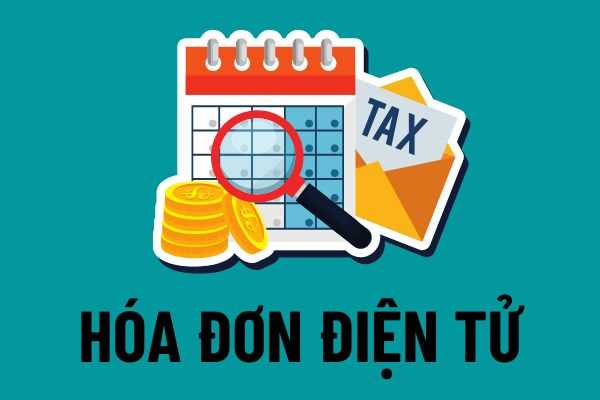Tax authorities notify taxpayers to apply e-invoices with codes, but taxpayers register to apply e-invoices in Vietnam without codes, what to do?
- The tax authority notifies the taxpayer to apply e-invoices in Vietnam with codes, but what should the taxpayers do to register for e-invoices without codes?
- What is the current registration form for using e-invoices in Vietnam?
- How to apply risk management in the management of tax registration in electronic invoices?
The tax authority notifies the taxpayer to apply e-invoices in Vietnam with codes, but what should the taxpayers do to register for e-invoices without codes?
According to Section 6 of Official Letter 5113/TCT-CS in 2021 guiding some contents of e-invoices, the General Department of Taxation has issued the following instructions:
Pursuant to the provisions of Article 91 of the Law on Tax Administration in 2019:
- When receiving registration for use of e-invoices (under Form No. 01/DK HDĐT issued together with Decree No. 123) from taxpayers being organizations or enterprises registering e-invoices without codes, the The tax authority compares it with the Notice on the use of invoice form (with or without code) sent to the taxpayer and instructs the taxpayer to change the registration information if receiving the notification of acceptance from the tax authority. use the invoice with the tax authority's code to send back to the tax authority in case the tax authority has notified the taxpayer to use the e-invoice with the tax authority's code.
The e-invoice system has added the function for tax authorities to enter a list of taxpayers using invoices with code and further compare this condition before creating a notice of acceptance or disapproval of registration for using electricity bills. death of the taxpayer. The e-invoice system has also upgraded to support leadership, tax officials can actively choose to accept / not accept the taxpayer's registration for using e-invoices according to the actual use of registration. electronic invoices of taxpayers.
- In case the taxpayer does not send changes in information to register for the use of electronic invoices with the tax authority's code (for the case where the tax authority has notified the taxpayer to use the electronic invoice with the tax authority's code) then the tax authority assesses the level of risk to issue a decision on inspection at the enterprise's headquarters according to the Circular No. 31/2021/TT-BTC dated May 17, 2021 of the Ministry of Finance on regulations on application of risks. in tax administration to check the satisfaction of information technology infrastructure conditions specified in Clause 2, Article 91 of the Law on Tax Administration. If the taxpayer does not meet the conditions for using e-invoices without the tax authority's code, the tax authority shall notify in writing of the request for the taxpayer to switch to e-invoices in Vietnam application. with code of CQT

Tax authorities notify taxpayers to apply e-invoices with codes, but taxpayers register to apply e-invoices in Vietnam without codes, what to do?
What is the current registration form for using e-invoices in Vietnam?
According to the Appendix issued together with Decree 123/2020/ND-CP stipulating invoices and documents, regulations on registration forms for the use of e-invoices are as follows:
Download the form: Here.
How to apply risk management in the management of tax registration in electronic invoices?
According to Circular 31/2021/TT-BTC, applying risk management in tax registration management as follows:
"Article 16. Application of risk management in tax registration management
Based on the list of taxpayers classified according to tax registration risk levels in Article 13 of this Circular, the tax authority can apply appropriate measures in dealing with, handle or coordinate with the business registration authority. shall be handled and handled according to the provisions of the law on business registration and tax registration.
1. In case a taxpayer changes his/her tax registration information and changes the tax authority directly managing it:
a) High risk: The tax authority of the place of departure and the tax authority of the place of transfer shall coordinate in conducting the inspection at the tax office's office, inspecting or inspecting at the taxpayer's office in accordance with the law. current;
b) Medium risk: The tax authority of the place of relocation shall put it under supervision and request the taxpayer to provide additional explanations of information and documents at the request of the tax authority;
c) Low risk: The inspection and supervision have not been carried out; conduct tax compliance assessment, risk classification for the next audit period.
2. In case the taxpayer announces the suspension of business operations
a) High risk: Strengthening the implementation of tax management measures as prescribed, in accordance with the situation of taxpayers' tax obligations to promptly handle tax debts, invoices and violations ( if);
b) Medium risk and low risk: Implement tax management measures as prescribed; conduct tax compliance assessment, risk classification for the next audit period.
3. In case of invalidation of tax identification numbers
Prioritize according to the results of risk ranking from high to low to carry out inspection and tax finalization at the taxpayer's office in accordance with regulations.
Update the status of dissolution, bankruptcy or inactivity on the tax registration application system for cases where tax obligations have been fulfilled as prescribed. Apply measures to urge taxpayers to fulfill their tax obligations before dissolution, bankruptcy, or shutdown as prescribed.
4. For the remaining cases: Regularly review cases with signs of high risk to determine the list that needs to be checked and verified the operating status at the business location."
LawNet
